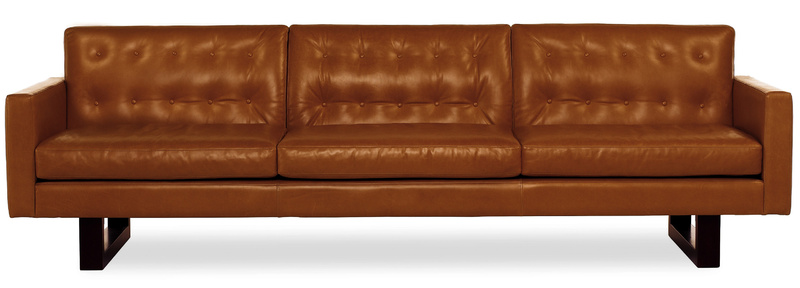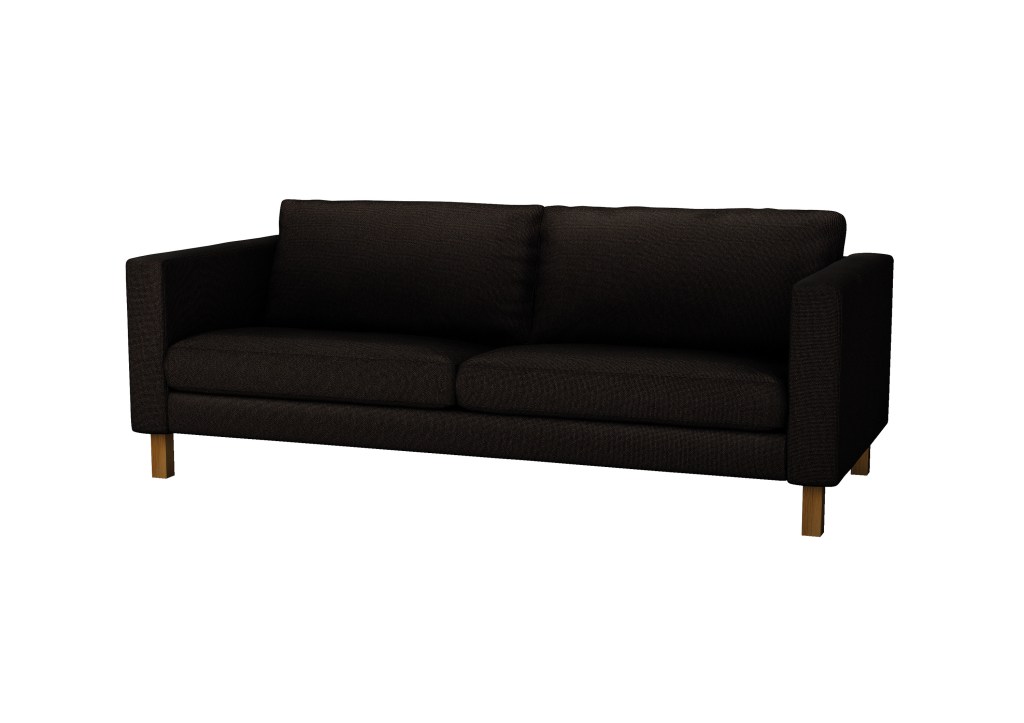Buying a new sofa – one of the largest and most-used pieces of furniture in your home, the scene of much reading, TV-watching, snoozing and everything else-ing – is not a task to take on lightly.
You want comfort, style, durability, fabric that will withstand a spill and color that’ll hide pet hair. And you don’t want to pay too much. But what’s too much?
Prices can vary wildly depending on the store and the manufacturer. Some of those differences are cosmetic, but most of what separates the high end from the low end is under the hood.
Pricier sofas generally have goose-down cushions for ultimate softness and are made with the most durable materials, including kiln-dried hardwood to prevent warping, doweled joints for maximum stability, and eight-way hand-tied springs to prevent sagging. At high-end stores, you’re also paying for the design quality, the knowledge of the sales staff and the ability to customize just about anything.
Ultimately, said Peter Howlett, director of operations at high-end furniture maker George Smith, where sofas run between $10,000 and $20,000, you’re paying for longevity.
“It’s going to last four generations because of the materials we use and the way it’s crafted,” Howlett said.
That’s not a knock on cheaper sofas, Howlett said: “All of them have a relevance in their market.”
Here’s what goes into sofas at either end of the price spectrum.
LOW
Ikea Karlstad sofa (81 inches, with cotton slipcover)
Price: $499
Construction: DIY – you put it together. Particleboard, plywood, fiberboard frame; joints secured with corner blocks, staples, screws
Cushions: High-resilience polyurethane foam with polyester wadding
Customization: Slipcovers available in 11 colors, removable and machine washable
Waiting time: None. Everything is in stock.
HIGH
George Smith Signature sofa (72 inches, in a basket weave linen)
Price: $10,685
Construction: Hand-built by craftsmen. Kiln-dried beech and birch wood frame; joints secured with dowels (wooden pegs that are hammered in and glued)
Cushions: 80 percent feather, 20 percent down
Customization: Everything is customizable, including size, fabric and decorative touches such as welts and buttoning.
Waiting time: 10 to 12 weeks from the receipt of fabric.
FIVE KEYS TO SMART SOFA SHOPPING
No matter your budget, a sofa is a big investment. Here are five tips for shopping wisely, courtesy of furniture maker Mitchell Gold:
1. Measure. There’s nothing worse than buying a dream sofa you can’t get into your home. Go shopping armed with precise measurements of your stairwell, elevator, doors, hallways, garden gates and any other space your new sofa might have to squeeze through.
2. While in the store, sink into the sofa the way you would at home. Lie down and put your feet up if that’s how you plan to use it, and test its comfort. Make sure the armrests are well-padded; you don’t want to feel wood poking through.
3. The sturdiest sofa frame will be made of kiln-dried hardwood like maple, poplar, beech or oak, or engineered hardwood. Avoid air-dried wood or soft woods, like pine. Joints secured with corner blocking, dowels and screws will last longer than just glue and staples, and it’s best to have a ticking between the foam cushion and fabric cover. Check stitches to make sure they’re even and not bunched.
4. Consider the cushions. The softest, most luxurious cushions are filled with goose down, but they take a lot of regular fluffing to keep their shape. Less expensive cushions made of high-resiliency foam compress during use and then spring back to shape. A happy medium: An inner foam core wrapped with a down cover.
5. Notice design details. Check out the sofa’s arms. A roll arm is more traditional, while a square or straight arm looks more modern. If you want the freedom to put the sofa in the middle of the room rather than against a wall, make sure the back is presentable.
CUSTOM SOFAS FOR THE MASSES
Custom furniture, once the purview of high-end designers, has come to the masses.
Many affordable, mainstream retailers offer custom fabrics, and some will customize sizes and cushions.
Here’s a look at custom sofa programs at some popular retailers:
PIER 1
Customize: Color
How it works: Three sofa styles are available in four colors each.
Cost: $699.95-$799.95
How long it takes: 14 days
CRATE & BARREL
Customize: Fabric, color, size, cushions
How it works: All of the store’s upholstery collection is available in 2,000-plus fabrics, or you can bring your own. You can also customize frame size and cushion core (what’s inside the cushion) on a few select sofa styles.
Cost: Varies depending on the sofa style and fabric chosen.
How long it takes: Eight to 10 weeks
ROOM & BOARD
Customize: Fabric, color
How it works: You can put any fabric on any sofa frame; pick from the store’s more than 240 fabrics, or bring your own.
Cost: Varies. One example: The Metro three-cushion, 88-inch sofa, usually $1,399 in its stock polyester microsuede, costs $1,799 when customized in Vance, a velvet fabric.
How long it takes: Six to seven weeks. Bonus: If you don’t like it, you can return it and pay a 10 percent cancellation fee.
PICK A FABRIC, ANY FABRIC
Just because you can get a sofa in just about any fabric doesn’t mean you should. Interior designer and style blogger Nick Olsen offers some advice on choosing fabrics.
Microsuede or ultrasuede are unbeatable for stain resistance. Another resilient option is cotton velvet. Don’t forget to try Belgian linen or cotton canvas in summer. Beware gorgeous fabrics like silk velvet: one water stain, and it’s there forever.
Trends are moving away from loopy boucle fabrics and nubby wool blends. Classic, crisp and tailored is in.
Unless you’re very daring, get a sofa in a neutral color and add color with throw pillows or blankets. “Resist the urge to buy a red or blue sofa,” Olsen said. “It could be the giant Smurf in the room.” On the flip side, he said, don’t do a beige sofa with beige pillows.
Dark colors and patterns are best at hiding stains and imperfections, but beware muddy colors, which can look dreary.
If ordering online, always request to have a fabric swatch sent to you. What looks beige online could look yellow or tan in your living room.
Get a tight-fitting slipcover instead of reupholstering so that you can change colors.
Send questions/comments to the editors.




Success. Please wait for the page to reload. If the page does not reload within 5 seconds, please refresh the page.
Enter your email and password to access comments.
Hi, to comment on stories you must . This profile is in addition to your subscription and website login.
Already have a commenting profile? .
Invalid username/password.
Please check your email to confirm and complete your registration.
Only subscribers are eligible to post comments. Please subscribe or login first for digital access. Here’s why.
Use the form below to reset your password. When you've submitted your account email, we will send an email with a reset code.